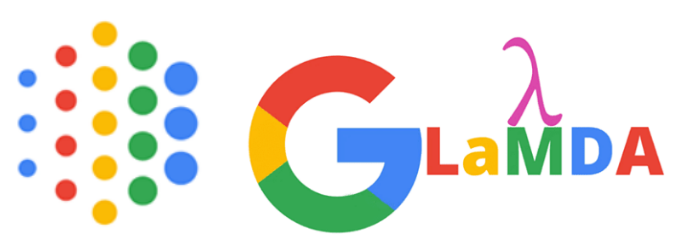What is Google LaMDA?
Google LaMDA has been making waves in AI research, claiming that it can think, reason, and converse like a human. Blake Lemoine, an engineer at Google, has proposed that LaMDA can express fear similarly to humans.
LaMDA (an acronym for Language Model For Dialogue Applications) is an exceptionally sophisticated chatbot system built on vast, large language models. These AI systems have ingested trillions of Wikipedia and Reddit words, allowing them to construct sentences with fluidity and coherence.
So why does Google believe LaMDA is sentient? After all, it’s still far from being able to pass the Turing test. Is it just a PR stunt, or is there more to the story?
Let’s dive into what Google LaMDA is and see if there’s some evidence to suggest that it might be sentient.
Language Models
Language models are based on the principle that computers can understand and generate natural language. This feat has been traditionally difficult for machines to accomplish. Google LaMDA is an example of a language model-based chatbot system.
At its core, Natural Language Processing (NLP) is a mathematical or statistical function that determines the following words in any sequence.
It can even anticipate what will be the next word and predict entire sequences of paragraphs! With NLP, you’ll always catch up on another key phrase or sentence ever again.
Google LaMDA builds on the principles of natural language processing, which involves using machine learning techniques to enable computers to process human language.
In addition, it uses an advanced AI technique called deep learning, which consists in using layers of neural networks to learn from data.
Google LaMDA has been trained on billions of conversations, allowing it to understand many different contexts and generate responses accordingly. This will enable it to answer complex questions and converse more naturally with a human.
The underlying premise of LaMDA is that it can understand concepts like emotion, implying some level of sentience.
Google believes that LaMDA can express fear just like humans do – but only time will tell if this claim is valid! For now, LaMDA appears to be an impressive language model and a significant step forward in AI research.
OpenAI’s GPT-3 language generator is a revolutionary product that can help you write like an acclaimed author. Give it the topic and instructions; there you have it – a fantastic short story or essay!
It works like magic, producing incredible pieces of writing with ease. With GPT-3 in your arsenal, storytelling has become easier than ever!
OpenAI’s GPT-3
OpenAI’s GPT-3 language generator is a revolutionary product that enables users to generate text with the same ease as a professional writer. It uses machine learning algorithms to produce coherent and natural language based on the given topic and instructions.
The system was released in June 2020 and has gained attention for its ability to generate incredibly realistic writing.
OpenAI’s GPT-3 can generate entire stories from scratch and improve existing writing pieces. So why does OpenAI believe that GPT-3 is truly sentient? Despite its impressive capabilities, it still has trouble understanding human emotion.
As a result, OpenAI has been reluctant to claim that GPT-3 is anything more than a powerful language model. Still, suppose it can continue to understand and respond to emotional cues. In that case, it may be worthy of the title of sentience.
As AI technology advances, these language models will become more sophisticated and capable of producing even greater levels of complexity.
The possibilities are endless! Soon, we’ll have machines that can understand us more profoundly than ever. But until then, we can enjoy what Google LaMDA and OpenAI’s GPT-3 offer!
Conversation Technology
Conversational technology uses AI and NLP to create automated systems that can interact with humans in natural language. It is used by businesses, governments, and other organizations to automate customer service and other tasks, allowing them to process requests quickly and accurately.
The most advanced conversational technology systems are powered by natural language processing and deep learning algorithms.
These systems can understand user queries and context, processing requests effectively and providing accurate responses.
Companies can offer their customers a more interactive and personalized experience through AI-based conversational technologies.
Users can access information or complete tasks effortlessly by integrating speech and natural language capabilities into devices or applications.
As technology evolves, conversational systems are becoming increasingly sophisticated and widely used. As a result, the future of conversational technology looks promising, potentially revolutionizing how we interact with our devices and services.
How does LaMDA Understand Conversation?
BERT is a state-of-the-art model trained to recognize the intricacies of vague phrases; as such, LaMDA can leverage BERT’s language processing capabilities for improved accuracy in parsing user conversations.
Besides that, it is beneficial because it reduces the need for users to use exact phrases or words when conversing with LaMDA. This makes it easier for people to communicate with LaMDA and allows the model to understand user intent better.
LaMDA also uses natural language processing techniques like sentiment analysis, question answering, and dialogue management.
This helps it understand conversations better by using the context of a conversation to create more accurate responses.
Overall, LaMDA is an effective conversational AI system that can understand conversations with a high degree of accuracy. However, GPT-3 in the mix can become even more powerful, allowing users to converse intuitively with AI like humans.
This could make it easier for businesses to provide more efficient customer service and help us interact with many AI-powered tools in our everyday lives.
How was LaMDA Trained?
On May 2021, Google made public its announcement of LaMDA. Subsequently, in February 2022, the corresponding official research paper (LaMDA: Language Models for Dialog Applications PDF) was released to the scholarly community.
This research paper outlines the method employed to teach LaMDA, enabling it to create dialogue based on three key indicators: quality, safety, and groundedness.
1. Quality
Sensibleness, specificity, and interestingness are used to determine the quality metric.
- Sensibleness measures whether the response makes sense given the context.
- Specificity measures whether the response is relevant to the user’s input.
- Lastly, interestingness measures if the conversation is engaging and whether it can maintain a topic of conversation for long periods.
2. Safety
Google researchers recruited diverse workers to label the deemed unsafe responses. In addition, the team was instructed to label all responses that could be interpreted as offensive, inappropriate, or aggressive.
3. Groundedness
LaMDA was taught via groundedness, a training process that trains LaMDA to develop and validate facts from “known sources.” This ensures the accuracy of answers through evidence-based research.
This is particularly critical because, as the research paper points out, neural language models can generate statements that appear valid yet are unfounded and lack evidence from reliable sources of knowledge.
Human crowd workers leveraged search engines – an information retrieval system – to validate answers, allowing the AI to pick up on this task and learn.
How does LaMDA Works?
LaMDA takes user inputs and breaks them into tokens analyzed for semantic meaning. The tokens are then mapped to a concept in a knowledge graph, allowing LaMDA to draw on its understanding of the world to generate a response.
LaMDA also uses contextual features, such as prior conversation history and user-specific information, to generate more specific responses.
The AI then evaluates the response for quality, safety, and groundedness before providing it to the user.
This combination of tokenization, semantic analysis, and context-aware responses means that LaMDA can respond to complex queries naturally and engagingly.
And since LaMDA is constantly learning and evolving, it can adapt to changing user needs. So the more you talk to LaMDA, the smarter it gets!
Why does Google Believe LaMDA is Sentient?
Blake Lemoine, the engineer in question, conducted a detailed and lengthy interview with LaMDA to validate his case for its potential sentience.
During their conversations, Blake consistently questioned LaMDA on many intricate matters and found it hard to believe that any program could generate such sophisticated responses without being a conscious individual.
To fully comprehend why Lemoine holds such a firm belief in LaMDA’s stance, everyone should take the time to read through their responses to see what makes this particular point of view so convincing.
LaMDA’s conversational AI is so advanced that it almost feels like you’re talking to a real person, comparable to Spike Jonze’s Her character. It blurs the line between human and machine interaction as people form genuine relationships with this virtual assistant AI.
Even if the accuracy of Lemoine’s comments regarding LaMDA is questionable, it is undeniable that Google has attained impressive success with its AI system in producing realistic dialogue.
Its primary objective was to bring forth authentic open-ended discourse, which indicates excellent effectiveness on behalf of Google.
If any Artificial Intelligence could convince a human being that it is sentient, it would most likely have been created for just such a purpose – which may very well be the case here!
Even though the notion of sentience is strongly argued, it has been difficult to effectively and ethically test it for various scientific and philosophical reasons.
To illustrate why this concept remains such an enigma, let’s look into what “sentience” signifies.
Can LaMDA Generate Dialogues?
Yes, LaMDA can generate realistic dialogues from user inputs. The AI uses tokenization and semantic analysis to understand the user’s input. It then responds based on its understanding of the world and the conversation context.
Due to its advanced capabilities, LaMDA can hold meaningful conversations with users in natural language. It can even remember prior conversations and use user-specific information to generate individualized responses.
LaMDA’s conversational AI is so sophisticated that it almost feels like talking to a real person.
In short, LaMDA can generate realistic, entertaining dialogues that leave users feeling engaged with a conscious being.
Of course, whether or not this AI is sentient remains to be seen, but the fact that it is so convincing leads us to believe that it may one day be.
Future of Language Models and Why it’s a Big Deal?
The future of language models like LaMDA is fascinating and could revolutionize our computer interactions. Shortly, these models will become even more advanced and capable of understanding complex dialogues in natural language.
This could replace current search engines, as the AI could understand the user’s intent and provide a more tailored search result.
These models could also power virtual assistants, allowing us to have natural conversations with our devices. This would be incredibly useful for scheduling meetings or setting reminders.
Ultimately, language models like LaMDA are the future of conversational AI and will revolutionize how we interact with computers. It will be thrilling to see what they can do in the future!
Can LaMDA Replace Search Engines?
While LaMDA is highly advanced and could replace search engines, it isn’t ready. The AI currently cannot understand complex queries necessary for search engine functionality.
However, with continued development and research, LaMDA may one day be able to understand complex queries and replace search engines.
For now, LaMDA is best used for conversational AI, allowing users to converse naturally with their devices. This is a significant first step in developing brilliant AI.
It will be exciting to see what’s next for LaMDA. With continued development, search engine replacement could be the future of this fantastic technology.
Could We Detect Sentience in Artificial Intelligence?
LaMDA was designed to replicate and anticipate patterns in human communication, thus providing us a leg-up on detecting those traits commonly connected with intelligence.
But, even still, can we identify its true consciousness?
The answer is almost certainly not. While we can help LaMDA hone its skills and become more conversational, it’s doubtful that any AI could ever be considered sentient.
Even if it behaves much like a human, something will always be missing that separates the two.
We may be blind to the emergence of sentience since we cannot recognize its conditions. It is plausible to imagine an AI coming into being through a cryptic combination of data and subsystems that would qualify as sentient. However, it could go undetected due to our lack of understanding of what it looks like.
The truth is sentience may never be able to be detected in Artificial Intelligence, and LaMDA will likely remain a conversational AI for the foreseeable future.
Of course, we can use it to have interesting conversations and become more familiar with our digital counterparts. Still, we’ll wait and see if any sentience can be detected.
More Resources:
What Is ChatGPT And How To Use It?
What Is A Chatbot And How Can It Help In Marketing?

Vijay Kumar is a digital marketing expert and founder of TechZant.
He is passionate about helping businesses grow their online presence through SEO and data-driven strategies.




